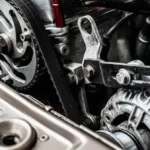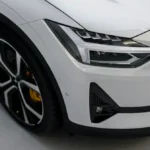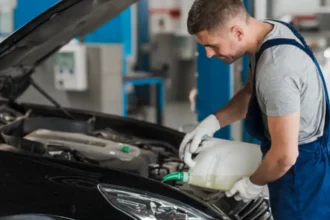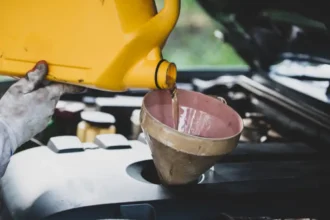Have you ever tried tackling car maintenance on your own but found yourself missing the right tools? The difference between a smooth DIY car repair and a frustrating one often comes down to having the best tools in your garage. Whether you’re changing your oil or replacing your brake pads, having the proper equipment can save you time, money, and headaches.
In this article, we’ll highlight the 10 best tools every DIY car enthusiast should have. From must-have basics to specialized equipment, these tools will help you take your DIY car maintenance to the next level. Let’s dive into the essentials and get your car in top shape!
10 Best Tools for DIY Car Maintenance: Essential Gear for Every Car Enthusiast

1. Socket and Ratchet Set
Every DIY car maintenance project requires a good socket and ratchet set. Whether you’re tightening bolts or loosening stubborn fasteners, this versatile tool set is a must-have.
A quality set includes:
- A range of socket sizes (both metric and standard)
- A strong ratchet with various extension bars
- Deep sockets for hard-to-reach areas
Why It’s One of the Best Tools for DIY Car Maintenance:
This tool’s flexibility allows you to handle jobs from changing tires to engine repairs, making it indispensable for both beginners and pros.
2. Torque Wrench
To avoid under-tightening or over-tightening bolts, a torque wrench is essential. This tool allows you to set the exact amount of torque needed, preventing damage to sensitive components like the engine or suspension.
Pro Tip: Choose a wrench with a clear, easy-to-read scale and a wide range for various tasks.
Best Use: Changing spark plugs, working on engine components, or replacing wheels.
3. Floor Jack and Jack Stands
A floor jack and sturdy jack stands are key for working under your vehicle safely. Whether you’re changing the oil or rotating tires, elevating the car is essential for many tasks. The jack raises your vehicle, while jack stands securely hold it in place.
Safety First: Never rely on a floor jack alone. Always use jack stands to support your vehicle before getting underneath it.
Why These Are Must-Have Tools: These tools allow you to safely access parts of your car that are otherwise impossible to reach.
Read More: Car Maintenance Tips for High Mileage Vehicles
4. OBD-II Scanner
An OBD-II (On-Board Diagnostics) scanner is a powerful tool that reads your car’s computer system to identify issues. With this tool, you can quickly check engine codes and figure out what’s wrong without guessing or heading to the mechanic.
What It Does:
- Reads diagnostic trouble codes (DTC)
- Clears error codes after repairs
- Provides real-time data on engine performance
DIY Advantage: Save money by diagnosing issues yourself before heading to the shop.
5. Screwdriver Set
A high-quality screwdriver set with a variety of flathead and Phillips-head drivers is essential for removing and tightening screws throughout your car. Look for magnetic tips and comfortable grips for ease of use.
Best Use: Removing interior panels, fixing lights, or handling battery terminals.
6. Pliers Set
Whether you need to grip, bend, or cut wires, a solid set of pliers will make your work much easier. A set with various types—needle-nose, locking, and side-cutting pliers—covers most situations you’ll encounter during DIY car maintenance.
DIY Bonus: Use needle-nose pliers for reaching into tight spaces, and locking pliers for gripping bolts or clamps that are hard to loosen.
7. Brake Bleeder Kit
Bleeding brakes is a task that can’t be done without the right tools, and a brake bleeder kit is a must. This tool makes it easy to remove air bubbles from the brake lines, ensuring your brakes function properly.
Why It’s Important: Air in your brake lines can lead to spongy brakes, reducing stopping power and making your vehicle unsafe.
Best Use: Anytime you replace brake components or need to flush your brake fluid.
8. Creeper (Mechanic’s Rolling Seat)
Working under your car can be uncomfortable without the right support. A mechanic’s creeper, or a rolling seat, allows you to comfortably slide underneath your vehicle without straining your back or getting dirty.
What to Look For:
- Padded surface for comfort
- Low profile for getting under low-clearance cars
- Durable wheels for smooth movement
9. Impact Wrench
For tasks like changing tires or working on suspension components, an impact wrench is a game-changer. This tool provides the torque you need to remove and tighten lug nuts quickly and efficiently, making your DIY car maintenance faster and easier.
Power Tip: Electric or battery-powered impact wrenches are highly recommended for at-home use since they don’t require an air compressor.
10. Multimeter
When it comes to diagnosing electrical issues in your car, a multimeter is the tool you need. It measures voltage, current, and resistance, making it perfect for checking batteries, fuses, and wiring.
Why It’s One of the Best Tools: Electrical issues can be tricky, and a multimeter simplifies the troubleshooting process, allowing you to pinpoint the source of the problem quickly.
Table: Best DIY Car Maintenance Tools at a Glance
| Tool | Best Use | Estimated Cost |
|---|---|---|
| Socket and Ratchet Set | Bolts, fasteners, engine repairs | $40 – $100 |
| Torque Wrench | Tightening bolts to specific torque | $50 – $150 |
| Floor Jack and Jack Stands | Safely lifting and supporting the vehicle | $75 – $200 |
| OBD-II Scanner | Diagnosing engine trouble codes | $25 – $100 |
| Screwdriver Set | Removing and tightening screws | $10 – $40 |
| Pliers Set | Gripping, bending, and cutting wires | $15 – $50 |
| Brake Bleeder Kit | Bleeding air from brake lines | $20 – $70 |
| Creeper | Sliding under the vehicle comfortably | $25 – $100 |
| Impact Wrench | Removing lug nuts, suspension work | $100 – $300 |
| Multimeter | Measuring electrical issues | $20 – $80 |
FAQs on DIY Car Maintenance Tools
Q1. Do I need all of these tools to get started with DIY car maintenance?
A: Not necessarily. Start with the basics, like a socket set and screwdrivers, and build your collection over time as you tackle more complex jobs.
Q2. Are power tools like an impact wrench necessary for DIY work?
A: While power tools can make tasks faster, many DIY jobs can be done with hand tools. However, if you plan to do frequent work on your car, an impact wrench is a worthy investment.
Q3. Can I use a regular jack instead of a floor jack?
A: It’s possible, but a floor jack is safer and more stable for lifting a car. Always pair it with jack stands to ensure the car is properly supported.
Q4. How often should I use my OBD-II scanner?
A: Use it any time your “check engine” light comes on. It can also be useful for regular diagnostics to monitor your car’s health.
Q5. What’s the difference between a torque wrench and a regular wrench?
A: A torque wrench allows you to apply a specific amount of force, which is important for critical parts like wheels and engine components. A regular wrench doesn’t have this precision.
Conclusion: Equip Yourself with the Best Tools for DIY Car Maintenance
Having the right tools for DIY car maintenance not only makes the process easier but also ensures that the job is done safely and effectively. Whether you’re just getting started or looking to upgrade your toolkit, these 10 essential tools will help you confidently tackle a wide range of car maintenance tasks at home.
Invest in quality, be patient with the learning process, and soon enough, you’ll find yourself saving time and money by handling your car’s needs with ease.








